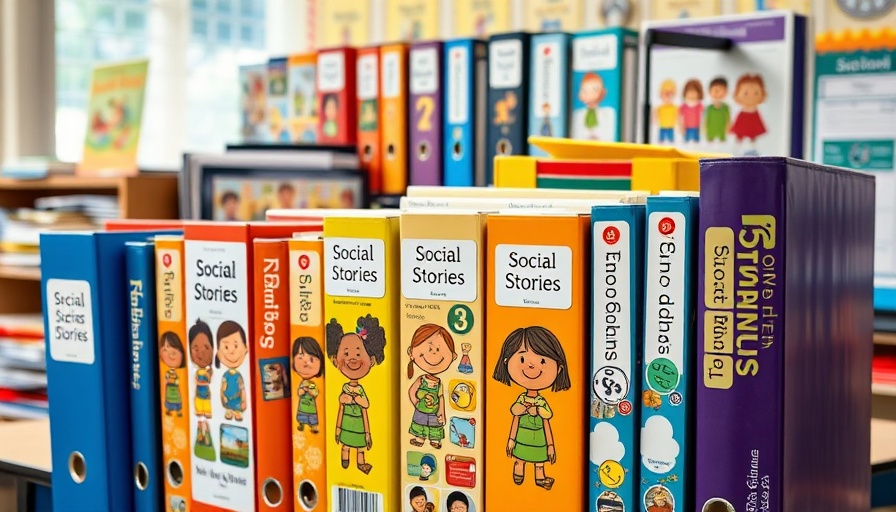
Understanding Social Stories: A Tool for Every Classroom
Social stories, originally developed by Carol Gray, are powerful, personalized narratives that describe social situations and appropriate responses to help students with autism navigate their interactions. These stories are tailored to individual students, addressing their unique challenges and providing them with tools to manage various social scenarios. With growing research supporting their effectiveness, social stories have become an essential resource for educators.
Why Social Stories Matter in Today's Educational Landscape
Given the increasing emphasis on inclusivity in the classroom, understanding how to support neurodiverse learners is crucial. Research indicates that social stories can significantly improve communication, social skills, and overall classroom behavior among students with autism and ADHD. They help in reducing anxiety, as many children thrive when they can anticipate and understand expected social interactions. Teachers today can create a bridge of understanding by incorporating these stories into their teaching methods.
How to Create Effective Social Stories
Creating an impactful social story involves several steps. Start by identifying the specific situation the student finds challenging—this might be anything from handling a fire drill to participating in group work. Write a simple, clear narrative that describes the situation, the relevant social cues, and appropriate behaviors. Incorporate visuals to enhance comprehension, particularly for younger learners or those with limited language skills. Sharing the completed story with the student can offer them a sense of agency and ownership over their learning environment.
Real-Life Implementation in the Classroom
Consider how a third-grade teacher implemented social stories for a student struggling with anxiety during lunch. By crafting a story that detailed the lunch process—lining up, sitting at the table, and appropriate conversational exchanges—the teacher eased the student’s fears. Over time, the student not only became more comfortable in this environment but also began initiating conversations with peers. This example illustrates the practical, transformative power of social stories in real educational settings.
The Shift Toward Inclusive Education
As educational practices evolve, there's a growing recognition of the need for strategies that facilitate inclusivity. Social stories exemplify a method that empowers students to thrive alongside their peers. Educators equipped with effective tools, like social stories, can foster an environment that celebrates diversity while addressing individual educational needs. Research findings suggest that not only do these stories benefit students with autism but they also nurture understanding and empathy among classmates, promoting a more cohesive classroom culture.
Exploring the Future of Social Stories in Education
Looking ahead, the application of social stories will continue to adapt. With technological advances, platforms that allow for interactive and digital social stories could become mainstream, enhancing accessibility. As more educators recognize the importance of socio-emotional learning, the integration of such tools in curricula will likely become standard practice, ensuring all learners, regardless of their challenges, have the opportunity to succeed.
Join the Community of Support
For educators eager to enrich their classrooms with resources tailored for diverse learners, engaging with platforms like the Autism Classroom Resources can be invaluable. They offer a plethora of printable resources and video guidance specifically designed for special educators. By collaborating with fellow teachers, sharing insights, and accessing structured training programs, educators can enhance their approaches to nurturing neurodiverse students.
 Add Row
Add Row  Add
Add 




 Add Row
Add Row  Add
Add 

Write A Comment